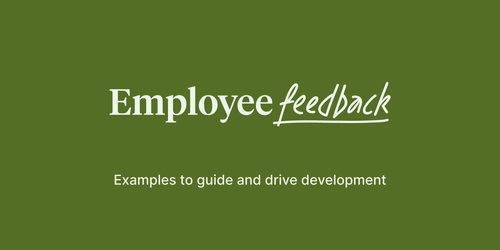
Article

As today’s workplaces continue to face uncertainty, companies are looking to data for hints at what the future will hold. Culture Amp analyzed exit survey responses collected from more than 100,000 employees over a 12-month period and found that the most-cited reason for leaving was a lack of career opportunities.
Employees are making it clear that they want development opportunities, and companies are responding to that by investing in development. To retain top employees, it’s crucial for companies to get the process right. In a recent Culture Amp webinar on mastering employee development, Lisa Vandertogt, Senior People Scientist at Culture Amp, and Irene Magriplis, People and Culture Manager at Teach Starter, explored how to overcome a few of the most common challenges to effective employee development. Irene shared real-world insights based on Teach Starter’s experience implementing a new development planning process this year.
On the surface, development planning looks relatively simple, so why do employees struggle with it? Here are four questions employees often ask about development, along with tips for simplifying and clarifying the development process.
Employees often have trouble prioritizing development. Lisa suggests that if organizations consistently hear from employees that they don’t have time for development, it’s worth asking, “Why don’t they feel like it’s a priority? What are they putting first?”
Encourage senior leaders to model the importance and usefulness of development. When leaders prioritize their own development and share their learnings, it sends a powerful signal to the rest of the organization – something Irene saw firsthand at Teach Starter. In the webinar, she shared, “The role that leaders played to support the [development] process had a huge impact on how successful the rollout of our development planning program was.”
To show employees that development was a company-wide priority, Teach Starter organized a two-week development planning period, during which everyone in the company would formulate their own individual development plans. This got all of Teach Starter’s employees talking about development and working on setting their development goals at the same time. Encouraging everyone to prioritize the development process is a great way to not only boost engagement but also improve company-wide morale.
A lack of purpose or clarity can stop development in its tracks. Lisa offered the example, “Let’s say I’m an employee with the aspiration to be a brilliant coach. I might know that that's what I want to be, but I don't necessarily know how I'm going to get there.”
Teach Starter was very intentional about how it communicated the new development planning process to employees. Before and during the rollout, Irene used various tools, including a development planning Slack channel, to market it internally. That helped everyone understand why it was happening and what was expected of them.
Culture Amp recommends separating performance and development conversations to clarify the differences between the two. When these conversations overlap, the extrinsic motivation (title/compensation) associated with performance measurement can interfere with the intrinsic motivations (learning and growth) associated with development. At Teach Starter, the performance and development programs run on separate schedules. Guided twice-yearly development conversations help team members identify their skills, knowledge gaps, and personal growth areas. From there, they use Develop by Culture Amp to build a plan that’s personalized, meaningful, and motivating for them.
It’s crucial for employees to feel supported throughout the development process. They need to know who is available to help them, and how specifically that person can help them. Without the right guidance, tools, and information, even the most thorough development plan can fall through, as employees know “what”’ they want to achieve but not “who” will help them achieve those goals.
Everyone at the company has a role to play. Lisa explains, “The employee should ultimately own and drive their own development plan and their subsequent development actions. The leader or the coach plays a crucial role in supporting, coaching, and enabling the employee and also connecting them to the right resources and people. The company is responsible for providing the structure and resources and setting the tone and culture around development.”
If employees don’t have a way to track their progress, their development plan may quickly fall off their radar. Irene suggests, “Think about how you can continue to drive momentum and embed conversations into your culture around development planning.” This might include working development into your employees’ weekly or monthly 1-on-1s, or holding your leadership team accountable for following up with people.
She also recommended that companies measure their development programs' impact and assess whether employees find these tools valuable. To ensure that the development planning process is achieving what you set out to achieve, she recommends incorporating some questions about the development process into your employee engagement surveys.
Teach Starter successfully implemented its new employee development process using Develop, Culture Amp’s science-backed development solution. The company uses Develop to provide structure and guidance for team members as they craft their own development, to help team members and managers have better conversations around growth, and to provide development-related insights to company leaders.
Data from Develop not only helps companies track the impact of development initiatives but also allows them to customize future development opportunities to align with employees’ needs and interests. Irene said, “If we see a high portion of our team wanting to improve their strategic planning skills, for example, then that gives us the information that we may be able to organize some learning targeted in that space.”
When employee development is successful, everyone benefits – and the right technology will support your company’s development process every step. For a deeper dive into common challenges associated with employee development, and to hear more about how Teach Starter navigated them with Culture Amp’s help, watch the full webinar on demand.

Learn how Develop empowers employees to create actionable, measurable development plans.